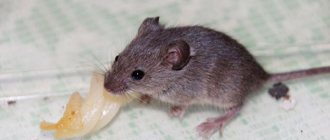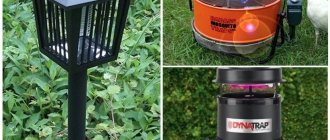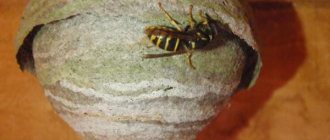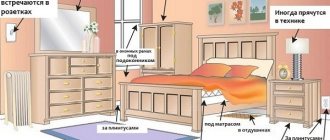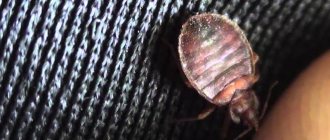Home House and cottage Do it yourself
A do-it-yourself mousetrap made from scrap materials can cope with the task of catching no worse than an industrial product of a similar purpose. In addition, some types of homemade mouse traps do not kill the animal, but only limit its freedom of movement. This moment attracts those who, for whatever reason, do not want to cause the death of an animal and are ready to take on the burden of taking it away from home in order to release it.
Despite their cute appearance, mice can bring a lot of trouble into your home. The smallest is the noise at night created by rodents moving in the cavities of the building. Often, following the smell of food, mice encounter obstacles to their movement in the form of various building structures. If such parts are made of materials that are accessible to the incisors of mice, the animals will damage them.
Mice cause damage not only by eating food. Naturally, a mouse that gets to them is not able to eat everything, but you are unlikely to want to use food that mice have walked through. One of the negative aspects of being around mice is their smell. It is not only unpleasant, but also very persistent.
Mice can cause a fire - these rodents are not averse to tasting the insulation of laid electrical wires, which will cause a short circuit that provokes a fire. In addition, mice are very fond of such a habitat as polystyrene foam, which is easy to gnaw through passages. They often settle in places where polystyrene foam was used as insulation.
Mice are animals that excrete excrement directly as it accumulates in the corresponding organs. Therefore, if mice have entered food storage areas, they will not only gnaw through the packaging, but will also leave behind traces of their visit in the form of excrement, which, naturally, will render the food supplies unusable.
The main danger lurking in mice
Mice are not just unpleasant neighbors, but also quite dangerous animals for human health. These rodents are natural carriers of microbes that cause diseases such as:
- various lichens and fungal diseases;
- salmonellosis;
- toxoplasmosis;
- leptospirosis;
- rabies;
- tularemia;
- pseudotuberculosis;
- rickettsiosis.
In addition, a mouse can become a source of infection with the rabies virus. The mouse itself does not bite a person, but it can manage to bite a cat that is hunting for it and infect it. Subsequently, the already sick cat attacks people.
The negative aspects of the neighborhood of mice are not limited to those listed, but the examples given are enough to take all measures to remove these rodents.
Effective mousetraps are often relevant not only for private houses in rural areas, but also for residents of apartment buildings in the city. With the onset of cold weather, rodents move to where it is warmer, and channels for laid communications and ventilation shafts make it possible to reach the upper floors. If food leftovers are not removed from the apartment at night, the trash can is left open, and there is general unsanitary conditions, there is a high probability of mice appearing.
Mousetrap or cat
Cats are often cited as the best remedy for mice. However, this is not true. Firstly, as practice shows, the smell of a cat is not a factor for mice that forces them to immediately leave the place where such a mark is present. Secondly, the cat hunts mice only when it is hungry, and, having eaten, stops hunting. There is no strict scientific data on how many mice a cat catches. The only statistically reliable can be considered the recorded count of mice caught by the Scottish cat Towser over the course of twenty-one years. Their number was 28,899 rodents, but if we consider the day, then this is only 4 mice during the cat’s waking period.
The famous Austrian ethologist Konrad Lorenz cites an interesting case in his books. The mousetrap, made from a handy object such as a bucket, caught about two dozen mice overnight. A cat was thrown among the rodents. The pet quickly strangled 4 mice, grabbed one of the victims in its teeth and jumped out of the bucket. Having eaten the prey, the cat did not return to the trap, but calmly went home.
Unlike a live mouse trap, properly made traps are more effective and permanently control rodents.
Types and Types of Mouse Traps
Broadly speaking, mouse traps can be classified according to their capture methods.
- Mechanical traps.
- Sticky traps.
- Electronic traps.
Various poisoned baits are also used to kill small rodents. The use of such baits has some limitations:
- it is undesirable to use if there is a possibility of poisoned baits being eaten not only by mice, but also by domestic animals;
- allergic reactions may occur in people;
- if the corpse of a poisoned mouse is eaten by a pet (dog, cat), it may be poisoned;
- If a poisoned mouse dies within the house in a hard-to-reach place, for example, under the floor, the smell of decomposition will bring many unpleasant moments.
Unlike poisoned baits, traps do not have the listed negative features.
A piece of paper can help make sure that there are mice in the house. It needs to be crumpled up and placed overnight in front of the hole that could serve as the entrance to the burrow. If in the morning it turns out that the piece of paper has been discarded, it means that uninvited guests have indeed appeared in the house.
Disadvantages of Electronic Rat Traps
Like any electrical device, electronic rat traps can pose a hazard to pets and humans if not handled correctly. However, in fairness, it must be said that many modern models of electric rat traps powered by batteries, even with a gross violation of safety regulations during operation (for example, if you stick your fingers inside), are not capable of causing serious harm to human health.
On a note
The most dangerous devices to use are those made by yourself and powered by a 220 V mains voltage. Often, the circuits of such homemade products do not provide any protection - at best, a fuse that will not save you from a life-threatening electric shock.
In general, simple mechanical rat traps with a powerful spring can be considered much more dangerous to use than modern battery-powered electric rat traps. A trap can easily break a child’s finger or a cat’s paw, while electronic rat and mouse exterminators are designed in such a way that you cannot reach the electrodes with your fingers (or paw).
And even in the worst case, although the discharge will be very unpleasant for a person, it will not be fatal (a person is about 100 times larger than a rat, and the discharge power of a battery-powered device is simply not enough to cause serious harm).
It is also useful to read: Ultrasonic rat and mouse repeller Clean House
Such traps also have other disadvantages:
- High cost - prices for electronic shredders start from 2,500 rubles and reach 10,000 rubles for the most modern models. For that kind of money you can buy several dozen ordinary mousetraps, or several tunnel traps that are safe for pets and are not inferior in efficiency to electric traps;
- Dependency on power supply. If the trap runs on batteries, they will have to be replaced periodically. If the device requires connection to an outlet, then it cannot be used where there is no network;
- The need to regularly check and release traps. If this is not done, then within a few days the rat will begin to decompose right in the device.
And yet, the main disadvantages of electric rat traps are their high cost and the danger to people and pets that is greatly exaggerated in the minds of the average person. This is what limits the popularity of these devices among the people.
Review
“When I was at my sister’s, I saw how they were fighting rats there. They have special electric rat traps for this. The rat climbs inside to get some bread, and then electrocutes it. While we were staying for a week, they caught three rats in their cellar. An excellent remedy, no brains scatter to the sides, no blood, I just took this trap, knocked it over, the rat fell into the bag - and that’s all ... "
Alina, Tver
Advantages of self-made traps
Trade organizations offer many different devices designed for catching small rodents. But self-made traps are still somewhat preferable for a number of reasons:
- Since self-made traps are made from existing materials at hand, they will not require purchasing costs;
- Unlike some types of poisoned baits that cause allergies or have an unpleasant odor, using homemade traps will not require you to leave the house;
- Self-made traps do not pose a danger to small children;
- Possible repeated use without unnecessary costs;
- If it breaks, it's easy to make a new one.
Electromina for rats and mice
Many people keep various pets, communication with which brings many pleasant moments to both children and adults.
However, there are also animals that also constantly live next to a person and often visit his home (for example, mice, rats). But at the same time, they are uninvited and even harmful guests, since they are considered (and probably not without reason) carriers of pathogens of various dangerous infections.
It is hardly possible to wean them from going “on a visit without an invitation”; the desire to profit from them is stronger than fear. And then there is only one way out, no matter how scary it may sound, - to destroy them.
Usually, poisonous fertilizers or all kinds of traps and snares are used for this. These methods have been tested many times, are widespread, but are not always effective. It’s not for nothing that rats are considered one of the smartest animals; they smell poisoned food and don’t take it, and they simply bypass traps and snares or take the bait from them with such care and dexterity that these mechanisms don’t even work.
In addition, if rodents sometimes fall into traps and traps or eat poisonous food, they will face a painful death, which, in general, is inhumane even in relation to such harmful creatures.
About ten years ago I worked as a laboratory assistant in a high school physics classroom. And a large gray rat came to visit him from the basement through the gap between the floor and the wall. Several times she came without fear, even in my presence, and left very reluctantly when I threw an unbreakable object that came to hand at her: either a rubber bulb or a cardboard box.
I tried to use almost all traditional means against her, but to no avail.
I had to think about how to outsmart her. Finally came up with it.
In the laboratory, since pre-perestroika times, when the school radio engineering circle worked successfully and won many victories in radio sports, there was an abundance of all sorts of “electronic trash.” From this I decided to make an “electromine barrier” for the rat, powered by a household AC electrical network. Leaving the device under voltage unattended at night, contrary to the rules of electrical and fire safety, was a risky business. Then I decided to design another improved device, operating from an electric charge accumulated in a sufficiently powerful pair (battery) of capacitors “Electromine Barrage”, the result was simple, mobile, not emitting any alarming odors or sounds.
The device consisted of a pair of plates made of one-sided foil 1-mm getinax, turned with the conductive layer up. The strips can also be made from ordinary sheet metal, but only if the device is placed for use on a dry electrically insulating base, for example, on a wooden floor. At the ends of the strips were fastened with two electrolytic capacitors - their terminals of the same name were soldered to each plate, thus obtaining a battery of parallel-connected capacitors. I took the capacitors with a nominal value of 50 µF x 450 V so that they would have a sufficiently high voltage for a long time to ensure the proper destructive power even with a small self-discharge of the battery.
Fig.1. Layout of the electromine for rats: 1 — plate (one-sided foil getinax s1, 2 pcs); 2 - electrolytic capacitor (2 pcs), 3 - bit resistor R1. 4 - socket, 5 - load connection plug, 6 - rectifier diodes, 7 - charging resistor R2, 8 - power plug with wire.
Fig.2. Schematic diagram of an electromine for rats
The length of the plates was determined by the width of the path that the “electromine” was supposed to cover on the possible path of the animal and was about 500 mm. The width of the plates was about 100 mm, but this is perhaps the maximum, although it is also inappropriate to make them less than 50 mm - this harmful rodent can It’s easy to jump over the plates—you can’t deny a rat’s dexterity and intelligence. The distance between the plates (the gap) was small - only about 10 mm, it should only slightly exceed the size of the foot (paw).
In addition to the capacitors, wires from a socket attached to one of them were soldered to the plates. A plug from a simple rectifier consisting of two D226B diodes connected in series was connected to the socket to charge the capacitors. To reduce the current in the charging circuit, an 8.2 kOhm resistor is connected in front of the diodes. The other ends of the rectifier were connected to a 220V network.
And further. The terminal of a two-watt 10 kOhm resistor was soldered to one of the plates. Its other terminal remained free and hung above the second strip. By pressing the resistor with a non-conducting object, in a few seconds the capacitors could be discharged and the device safe.
In the evening before leaving work, I charged the device’s capacitors using a homemade rectifier almost to the amplitude mains voltage (about 300 V). (If there was a suitable power source, they could be charged almost to the maximum permissible voltage of the capacitors) After this, I installed an electromine near the gap through which the rat came and went.
On the third morning, the “electromine” went off - a defeated enemy was lying near the device.
MK 01 2008, A. Lysov, Ivanovo
Traps made from cans and buckets
The easiest and most effective traps to make can be made from scrap materials available in almost every household, such as buckets and various jars.
Using glass jars from eaten homemade preparations for the winter, you can make a simple trap. A ½ liter jar is enough. Using chewing gum or other adhesive material, such as a piece of insulating tape, a string with bait attached to it is attached to the bottom of the jar. The length of the string is chosen so that the bait hangs freely in the jar turned upside down, and the rodent needs to pull the string to make it more convenient to eat the treat. The jar is turned over and placed so that it rests with the edge of the upper cut of the vessel on some object that is in a state of unstable equilibrium, for example, on a large diameter coin placed on its edge. The diameter of the coin should be such that the resulting gap gives the rodent the opportunity to freely penetrate under the jar. A mouse that sneaks into the jar takes the bait, begins to pull it towards itself, the balance is disturbed and the coin, and after it the jar falls - the mouse finds itself under the jar and cannot get out on its own.
The disadvantages of such a trap include its disposability, that is, until the mouse is removed from the jar, which will have to be installed again above the bait, no other mice will be caught. The simplest traps made from a bucket and available materials do not have this drawback.
To make the simplest version of such a trap, you only need a bucket and a sheet of paper, the area of which allows you to cover the bucket. Even a newspaper will do. The bucket is covered with paper, in which slits are made radially from the center. Bait is placed in the center, for example, grain is poured. You can also hang the bait over the center, from which the slots radiate radially. They also create an opportunity for mice to climb to the top edge of the bucket by installing a flat bar at an angle (this part of homemade traps is called a “zadnik”). Attracted by the smell of the bait, the mouse climbs the rail and rushes towards the food - under the influence of the weight of the rodent, the paper bends in the slots and the mouse falls into the bucket.
Using a bucket you can make another type of trap. In addition to the bucket you will need:
- ruler or thin wooden strip;
- a piece of wire;
- spoke.
The knitting needle is attached across the ruler and, acting as a support, is placed on the top edge of the bucket. The length of the rack or ruler should be such that one end rests on the edge of the bucket, and the other end hangs above the bottom. The bait is placed at this end. The trap is installed so that the rodent can easily reach the ruler. The second end of the ruler is attached to the edge of the bucket with a thread of such length that the ruler can rotate at an angle of 70 to 85 degrees. Under the weight of the mouse moving towards the bait, the ruler will rotate and the rodent will slide into the bucket. The thread will hold the second end of the ruler, and under the influence of its weight it will return to its original position. If the bait is firmly attached to the ruler, the trap will be ready for use again.
It is easy to make a mouse trap from scrap materials, the principle of which is based on the inability of the mouse to stay on a rotating surface. Metal cans, drink packaging, and plastic bottles can be used as a part to ensure effective operation of the trap. How to make such a trap can be seen in the photo.
The bait is attached to the outside of the jar or bottle, which will rotate under the influence of the rodent's weight and the mouse trying to get to the food will slide into the bucket. If you attach baits in several places opposite each other, so that after turning the bottle one of the baits remains on the upper side, then several mice can get caught in such a trap.
Advantages and disadvantages of this device
Users leave many positive reviews about electric mousetraps. And indeed, they have a number of advantages that distinguish them favorably from other types of traps and other rodent repellents. One of the main advantages of an electronic trap is its ease of use. It is enough to install the device in a suitable place and turn it on, after which it is completely ready for use. Also among the advantages of these devices:
- compactness – there are very small models that can be installed even in hard-to-reach places;
- humanity - the rodent dies almost instantly, without suffering;
- ease of use - using the indicator you can find out about the status of the device and the presence of a mouse in it, it is easy to release the trap, and you do not need to touch the rodent;
- safety - most models are designed in such a way that they do not pose a danger to children and pets, in addition, they are non-toxic.
But electronic traps also have disadvantages:
- high price;
- dependence on power supply;
- the need to remove the corpses of dead mice.
There is a possibility that if the device is faulty, the person installing it may receive an electric shock. But most often this concerns homemade traps that do not provide protection.
Plastic bottle traps
Perhaps the most popular homemade traps are traps made from plastic bottles. As a rule, bottles with a capacity of one and a half to five liters are used.
The simplest trap is a bottle with bait placed at the bottom.
To increase the effectiveness of the trap, the neck of the bottle is often cut off.
In practice, the homemade mousetrap shown in the photo has proven its effectiveness.
The bottle itself is fixed to the surface with a thread. Trying to reach the bait, the animal makes its way into the bottle and, under the influence of the weight of its body, it tips over - the bottle falls, but it hangs, held by the thread, and the mouse cannot get out of the trap.
It is very easy to make a trap out of a plastic bottle that can trap several mice during the night. The walls of the bottle are lubricated with any vegetable oil, bait is placed on the bottom and the bottle is placed obliquely, ensuring easy access to the neck. A mouse that sneaks into the bottle after the bait will not be able to get out, since the slippery surface with the absence of protrusions on which to cling with its claws will not allow the animal to move upward towards the exit/entrance.
To make such traps, you can use not only plastic, but also glass bottles. For example, they take a champagne bottle, pour unrefined sunflower oil into the vessel and roll the bottle on the table so that the oil is evenly distributed along the walls of the bottle. The rodent, attracted by the smell of oil, enters the bottle through the neck and cannot get out because its paws slide along the oiled glass.
For the mousetrap to work effectively, you should keep it clean and wash it regularly using a solution of ash lye or at least regular soda. Neglecting this light will cause the mousetrap to acquire an unpleasant odor that repels rodents.
An effective trap, which is based on the same principle that fishing gear such as tops are made on, can be made from a one and a half liter plastic bottle. Cut off the top third of the bottle and, turning it over, insert it into the lower part. The parts are fastened together using glue, wire or paper clips. The bait is placed inside such a trap, and the neck itself is lubricated with vegetable oil. The mouse crawls inside for food, but can’t get back out.
A mouse trap can also be made from half a plastic bottle. Having retreated a few centimeters from the bottom, the walls are cut along the line of the circle so that when the resulting sectors are bent, sharp teeth are formed, directed towards the center inward. The bait is placed at the bottom and these teeth will not allow the mouse that has penetrated behind it to get out.
Review of industrial electronic mousetraps
Specialized stores offer a wide range of electrical traps of various designs, with a different set of additional functions, which differ quite significantly in price. Absolutely every buyer will be able to choose the best option.
Electronic mousetrap Victor
The Victor electronic mousetrap is one of the simplest and most reliable devices on the market. The entrance to the trap is designed in the shape of a cone, which additionally attracts rodents and prevents their escape, as well as accidental injury to people and pets. There is a built-in safety element that prevents activation when the door is open.
The mousetrap runs on 4 AA batteries. Their capacity is enough to kill 100 mice. The system automatically detects that the mouse is in a trap and warns about this by flashing the indicator.
Victor Multi Kill
The Victor Multi Kill mousetrap is one of the newest developments that recently appeared on store shelves. The trap requires 4 C batteries to operate. This kit is enough to kill approximately 150 mice. The device has 2 entrances, as well as a storage container that can hold 10 mouse corpses. Dead animals enter the chamber automatically, immediately after receiving a shock.
The live plates are located in a cone-shaped compartment. This shape prevents the rodent from jumping out of the trap, and prevents children or animals from touching dangerous elements.
Mousetrap Florada
The Florada trap is suitable for both mice and rats. The mousetrap is a plastic box with one entrance. The device operates either from a 220 V network or from R20 batteries (4 pcs.). The mousetrap has 2 indicator lights. The first is located on the body and can light up in red or green, signaling readiness for work, a rodent getting into a trap, or the need to remove a corpse.
The second indicator has a long cord, so it can be located quite far from the device. Once a mouse or rat is caught, it beeps and a blue light flashes.
EcoSniper
Electric trap EcoSniper GH-190 Rat Killer kills mice and rats. The device is powered either from the mains or from 14A batteries (4 pcs.). The mousetrap is made in the form of a small chest with six holes. Inside there are metal plates, when stepping on them, the rodent receives a powerful electrical discharge. Next, the corpse must be removed and the trap cleaned if necessary.
Principle of operation
Antirats-190
Antirats-190 is an electrical device made of durable plastic designed to combat mice and rats. The device runs on mains power or 4 C batteries. One set of batteries is enough for about 50 rodents. There are 6 entry holes on the side panel of the plastic box. Also on the body of the device there is a light indicator showing the battery charge status and the presence of a rodent in the trap. The device is designed for only one rodent, so after operation the corpse must be removed.
This Russian-made device, according to user reviews, is highly reliable.
Victor Electronic Mouse Trap
This electronic device runs on AA batteries (4 pcs.). A rodent, having gone inside at the smell of bait, cannot get out of the cone-shaped passage, so in any case it ends up on a plate that is under voltage. The mouse receives a current discharge for 5 seconds. The dead animal ends up in a special container, from where it can be easily thrown away. A set of batteries is enough for about 100 rodents. Light indicators located on the body help control the operation of the device.
Wooden traps
The simplest wooden trap is an ordinary mousetrap, which is designed on the principle of a spring trap. A metal frame with a spring is attached to a wooden plank. You also need a hook on which to attach the bait, as well as a latch that hooks onto the hook. The moment the mouse tries to pull the bait off the hook, the spring will work and slam it to the board.
You can catch several mice at once using a mink trap, a device sometimes called a hive mousetrap. Tunnels with a diameter of three centimeters and a length of six to seven centimeters are drilled into a wooden block. A loop is made from the wire, with the help of which a noose made of thinner wire is attached to the bar. Holes are also drilled in the block to attach the springs. Charged springs are tied with thick threads and baits are placed in the tunnels. Trying to get the “yummy”, the mouse chews the thread, the noose spring is triggered and the trap holds the rodent.
The schematic diagram of such a mousetrap is shown in the figure.
The Zürner trap has proven itself well in exterminating rodents. The bait is suspended above the point of contact of two rotating bars. Under the weight of a mouse approaching the bait, the bar rotates along its axis at the point of attachment to the wall of the trap, and the animal slides into the box, from where it cannot get out.
Electronic mousetrap
This type of mousetrap can be made by anyone with minimal knowledge of electrical engineering. There are 2 types of such mousetraps.
- Mousetrap cage. After a rodent, attracted by the smell of the bait, enters the cage, the trap door slams shut, the contacts located on the wall and the door are connected - the electrical circuit is closed and a signal sounds that the trap has worked.
- Killer mousetraps. In such devices, current is supplied to a metal plate installed at the bottom of the trap, as well as to the parts on which the bait is attached, or to parts that are placed on the path to the bait and which will definitely be touched by the animal making its way to the prey. The current passing through the body of the rodent that has closed the circuit kills it.
Rules of application and safety measures
Electric rat traps are quite easy to use. To catch a rat you need:
- Place bait in the device - for this there is a special feeder on the inside of the back wall of the device;
- Connect the rat trap to the network or insert batteries into it - depending on the model;
- Install the device where it can be easily reached by a rat or mouse attracted by the smell of the bait. It is advisable to choose a place to install the trap where pests are most often (where they leave their traces);
- From time to time (but at least once a day) check the indicator signals in the rat trap. Each model has its own mode of operation of the indicator, described in detail in the instructions;
- After catching a rat, you simply need to tilt the trap so that the animal falls out of it. If the corpse needs to be removed from the device by hand, the power in it is first turned off. In a model with a storage chamber, only the chamber itself is cleaned.
On a note
The Victor Rat Zapper Ultra is sold complete with a remote indicator that can be placed in an easily accessible, visible location. This is very convenient: the rat trap may be somewhere in the pantry behind a box of potatoes, and it will be difficult to look there regularly. It is enough to put the indicator on a shelf in the room and only check it. The rat catcher will only need to get it when the corresponding light comes on, indicating that the rodent has been captured.
Minced meat with onions, smoked sausage, scorched lard or bread lightly moistened with vegetable oil are good baits for rats.
It is also useful to read: Poison from rats and mice Goliath and features of the use of this remedy
Electric rat traps should only be used in areas where children and pets are not present. The exception is the Victor Multi Kill Electronic Mouse Trap, which is well protected and does not pose a danger to pets and humans.
Electric traps should also not be used outdoors. Here harmless and sometimes very useful animals - shrews, birds, hedgehogs, lizards and snakes - can climb into them and die. In such cases, the harm to the site will be greater than the benefit from destroying the pests with a trap.
Traps with glue
To make such traps, a sheet of cardboard, or plywood, or plastic is smeared with a special glue, which includes rosin, pine resin, bitumen pitch and petroleum jelly. There are also modern synthetic adhesives. You can buy them at hardware stores, or prepare them yourself from the above ingredients. Bait is placed in the center of an area covered with glue, and the mouse rushing towards it becomes tightly glued and subsequently dies either from stress or from dehydration.
Use of snares
To make such a mousetrap you will need:
- cable tie;
- heavy load;
- fishing line;
- clip;
- bait.
The snare is installed as shown in the photo.
A loop is made on the fishing line to which the load is attached, into which the bait is inserted and secured with a paper clip. The mouse, grabbing the bait, pulls it out of the loop, the load ends up in free fall and tightens the snare from the cable tie.



